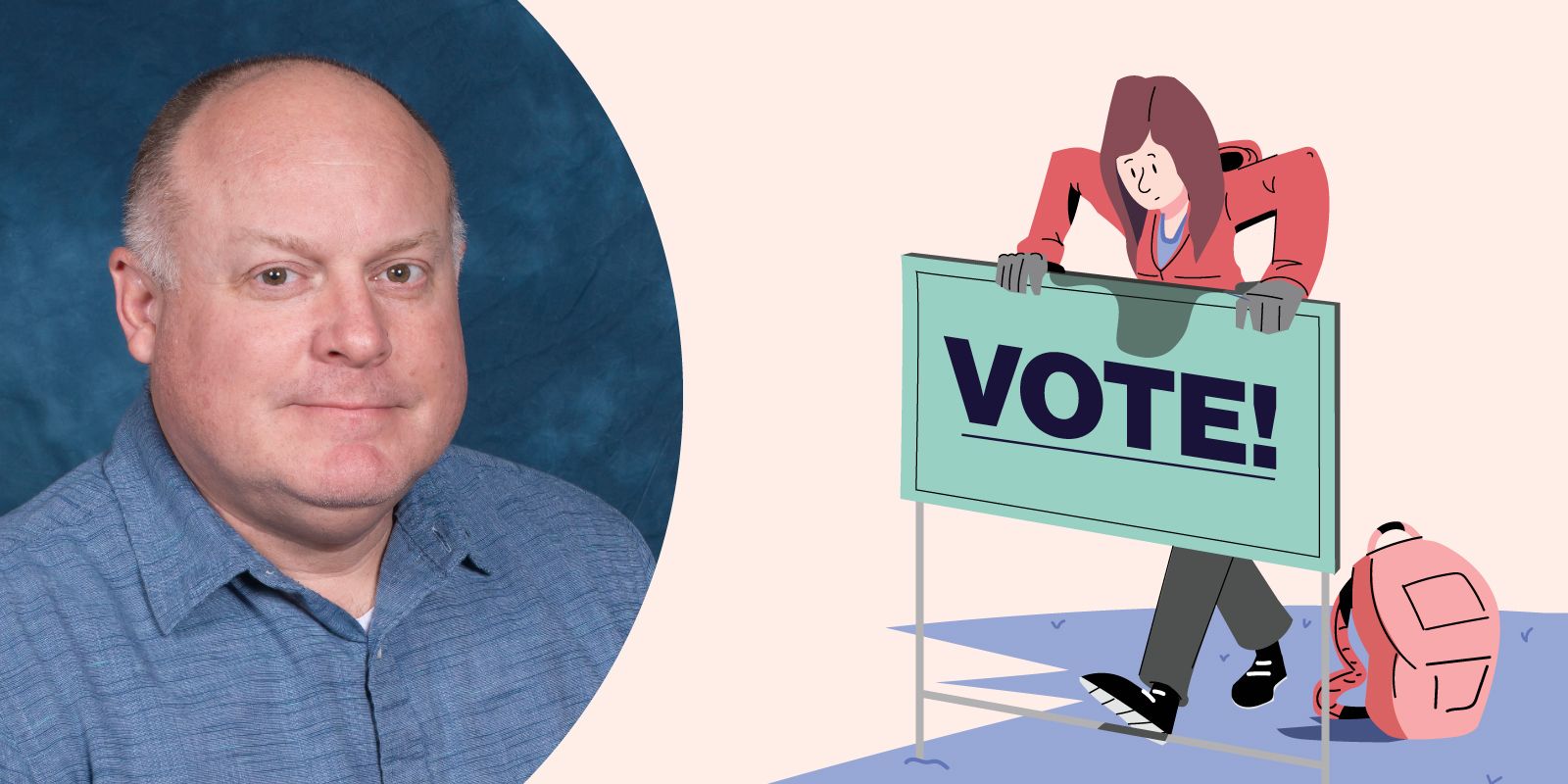Q&A: Dr. Kyle Ingle
A leading expert on school bond campaigns shares what he has learned

Dr. Kyle Ingle never planned on becoming one of the country’s leading experts on school bond campaigns. When his first posting as a professor took him to Bowling Green State University in Ohio, however, he simply couldn’t avoid them. As a new Ohio voter, Ingle was shocked at the “sheer frequency” of education-related referendum materials he received. Admittedly, he didn’t know much about bonds—but his new state leaned more heavily on school tax elections than any other. So Ingle followed his curiousity.
Thirteen years and many bond campaigns later, Ingle’s findings on bond and levy campaigns have guided countless districts to build support and buy-in from their communities. Currently an associate professor and assistant chairman for the Department of Educational Leadership, Evaluation, and Organizational Development at the University of Louisville, he has been published in several educational journals and encyclopedias, as well as in half a dozen books. We spoke with Ingle to learn what the research says about how districts can hit it out of the park on Election Day.
Have you found any correlation between how much a district spends and their success in passing a bond?
Our models suggested consistently that spending more money matters. For a unit increase in spending, there was an increase in the likelihood of passage, and it was
significantly so.
However, the type of campaign expenditures were pretty much insignificant. There was one exception, and that was the expenditures on yard signs. Of course, correlation doesn’t mean causation. Spending more money on yard signs doesn’t mean anything if you don’t have people who are willing to take those yards signs and put them out there in support. So essentially, we determined that the expenditure on yard signs is likely just a proxy for community support. The greater the community support, the greater the demand for the signs.
Why is community involvement essential for the passage of a bond?
This is huge. It’s one of those things that seems obvious, but there are still school districts who try central office campaigns as opposed to involving the community heavily. You must have community support, or build it. Stakeholders have to be willing to vote for increased taxation for education.
The central office campaigns, which relied more heavily on individuals who worked in the school district, without a whole lot of community support, tended to fail. But if you had engaged community members and let them make that clarion call for you, that was more successful. Here’s the point that we made: voters assume that school district personnel are going to be in favor of increasing taxes for schools—which discounts messaging from them. But if community members that are not employed by the school district are delivering the message, then other community members are more likely to listen.
One of the administrators we interviewed said, “School district personnel are essentially hired guns. We assume they’re going to be in favor of the bond, because that’s where they work. This money is going to benefit them most directly.” But when community members are advocating for the levy campaign, they tend to be seen as more legitimate voices in the community.
Besides your findings on yard signs, was there anything else significant you found in terms of spending?
We had a variable for campaign consultants—basically paying an external person from some organization to help run the campaign. That was insignificant.
What was funny about it is that a colleague and I did a presentation at the annual meeting of the Buckeye Association of School Administrators. We explained that we’d found that paying for a campaign consultant was an insignificant variable. But after we did our presentation, I don’t know how many people came up and asked, “Would you want to be a campaign consultant for us?”
I guess we could have made some consulting money if we’d wanted to, but I wouldn’t have felt very good about taking their money, especially knowing what I knew. Another reason I didn’t want to accept was that you have to know the community, and it takes time to get the feel and pulse of a campaign and of the community.
Why is it so important to train campaign participants on messaging?
Adequate message training was integral to the success of districts that passed their measures—you want there to be a consistent message as to why passing the levy
is important.
Campaigns should provide message training to ensure a consistent message across the community. However, they also want to be smart about targeting the message to specific demographics. And that’s where the message training comes in handy. Again, community members are going to be more amenable to hearing from a parent or a volunteer that’s not employed by the school district. So you want that consistent message training to make sure people are prepped for the potential questions that might be posed.
It’s kind of like prepping a witness before a trial. You don’t want them to just go in and wing it. You want to give them some training in advance to say, “Here are some of the potential questions that might be raised when you’re out canvassing the neighborhoods.” And you want them to have an answer as often as possible.
Have you found any districts with exceptional message training practices in place?
One district would use not only “sit-and-get” approaches to training with PowerPoint, but also modeling, like, “Pretend you’re going up to the door. How can you respond to this question? How are you going to respond when somebody is rude and slams the door in your face in front of your kids?”
So districts who spend more tend to pass their bonds. What about community members who get scared away by expensive campaign materials? If you’re a community member and you get a glossy mailer, which you know costs an ungodly amount, you might be like, “Well, if they need more support, why are they spending money on this crap?”—especially if you’re tax-averse anyway.
I totally get it. And that comes down to just getting to know the community. If you’re going to contact community members, you want to figure out what they’re willing to support—and why. If you’ve had kids that were in the school district years before, you may be saying, “Look. I’ve done this. I’ve paid taxes for years, and I don’t have any kids in the school district anymore. My grandkids have already graduated. I’m on a fixed income. Why would I want to support this?”
So what the district would do is try to target the campaign message to them. They might say, “This is going to help support after-school programming to prevent crime. You don’t want high crime in your neighborhoods.”
What types of campaign strategies should schools avoid?
The most important recommendation I’d have for school committee members is to know your community—that context—when planning for campaigns and campaign expenditures. You have to know what your community is willing to support.
You also have to know your community in order to customize campaign strategies. If you don’t know the community, you’re less likely to win them over. That’s all there is to it. And that’s why I think the campaign consultant expenditure, at least in our research, was not significantly associated with a positive outcome. If you don’t involve the community members, taking that message out to the streets and the neighborhoods, you’re less likely to win at the ballot box.
I would also recommend avoiding messages that don’t prioritize benefits to children and the community. So a new operating levy, like the ones that we studied in Ohio, may just go to the district operating budget for expenditures such as salaries and benefits. But voters, they just see that as benefiting employees. The campaign chairs and the community members have to sell what the levy’s going to
do for the kids in the community, rather than what it’s going to do for the employees.
That’s what you have to combat in your message—it’s not just to benefit teachers and administrators that work for the school district. It’s to benefit the kids in the community.
This is why we’re doing this; we’re doing it for the kids.


SchoolCEO is free for K-12 school leaders. Subscribe below to stay connected with us!

